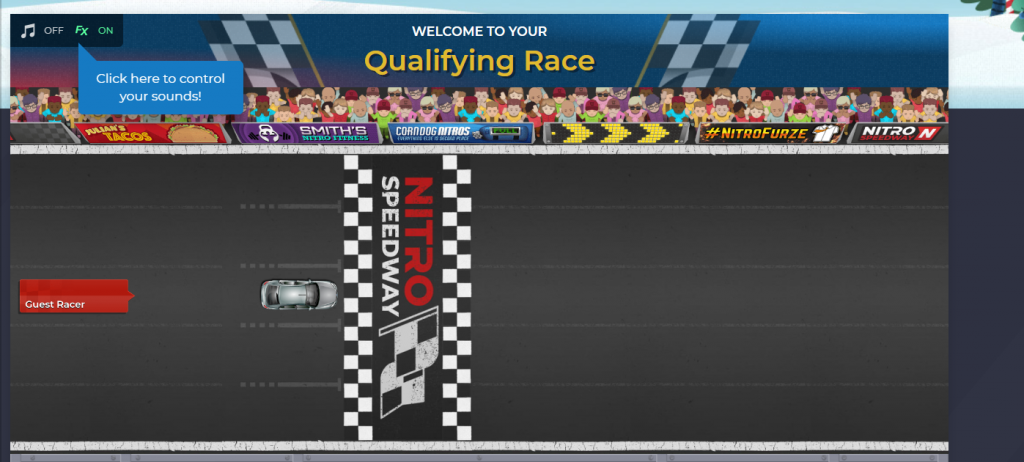If you really want to impress your coworkers who normally slog through the day at a snail’s pace – learn to type faster.
More specifically, at good typing speeds of over 100 words per minute (WPM). They’ll be mystified by watching your fingers seamlessly slide across from one key to another in a mesmerizing dance.
The average touch typist can reach speeds of up to 60 words per minute. Given that most of us spend a long time in front of our computers, 60 wpm or under that is generally very achievable. But if you really want to spice things up, you’ll have to break that 100 WPM barrier. And that isn’t tough at all.
It takes just a little bit of talent, a whole lot of experience, and a ton of practice – but you can get there.
In this blog, we’ll go over 9 tips to help you type faster, and if you’re serious, even surpass the 150 WPM milestone.
1. Learn to Touch Type

This is obviously a no brainer. You have to first memorize the position of each key without having to look down at the keyboard. No cheating! This is relatively easy to accomplish in just a few months by typing on a regular basis. It won’t take long before you’ll establish that all-too-important link between your fingers and the keys through sheer muscle memory.
Pro tip: Use the Home Row Position
The standard QWERTY layout for keyboards has the keys ASDF and JKL; neatly arranged in a straight line. The Home Row Position, as it is often called, is when you rest your fingers on the ASDF and JKL; keys. It’s known as the HOME ROW because your fingers start from these keys and always return back to them. Some keyboards have F and J keys with a raised line on them to aide in finding them without looking down.
The Home Row is meant to familiarize you with the QWERTY layout. It is by no means the only means of getting started. As you become more experienced, you will naturally develop your own unique variations for finger placement that naturally works best for you.
2. Maintaining a Good Posture
When it comes to typing speed, how you sit dictates the posture of your hands and fingers. Posture has a direct implication on your typing speed. A slouched or laidback position (especially if you’re lying on a couch) will impede your typing speed. The best course of action is to sit in an upright position that makes typing easier and faster.
Here are a few tips for an ergonomic posture to maximize your typing speed:
- Place the keyboard just a little under your elbow level (keeping both levels parallel to each other also works).
- Both elbows need to be at an open angle (between the 90 to 110 degree ranges). This will relax your shoulders and forearms.
- The keyboard should be laid out on a flat surface that does not shake or bounce under pressure
- Your wrists should be naturally straight and not flexed.
- Try not to rest your wrists on the desk. This is because it puts a lot of pressure on your hands and cuts off the circulation of blood.
- Plant your feet firmly on the ground (in a flat position)
Note: Some keyboards have little legs at the back end that prop up the keyboard, creating a tilt. This might make it a little easier to access the keys, it isn’t ergonomic because it causes your wrists to make an upward flexed posture. The only time when this tilt works is when you are sitting in a reclined position.
3. Use All 10 Fingers to Type Faster – All Fingers on Deck!
The next step is to learn how to use all 10 fingers to type. If you’re using the Home Row, start by resting your index fingers on the F and J keys. This will allow your other fingers to fall into place naturally. You’ll notice that navigating across from one key to another becomes a walk in the park.
If you are a little confused by this, head on over to websites like Typing Club, where they will take you through each step to familiarize yourself with using all 10 fingers. Some of their exercise only start with 2 in the initial stages, but as you go through their program, you’ll slowly learn how to type faster with all 10 fingers.
4. Using Keyboard Shortcuts
Using keyboard shortcuts is an essential tip that we cannot stress enough. You’ll naturally make several typos as you go along your routine, but having to backpedal with the Backspace button is time consuming. Why spend time pressing the backspace several times to delete a word when you can do so quickly with the Ctrl + Backspace key?
You can also use the Shift + Arrow keys to quickly select and delete an entire sentence.
Some of the most essential keyboard shortcuts for Window users can be found here.
5. Practice Using 10FastFingers, NitroType, and MonkeyType

For those of you who have already learnt touch tying, hop on over to 10FastFingers to start practicing. Below are a few websites that we frequently use to practice our typing speed.
NitroType
We prefer NitroType because it makes touch typing very competitive with a unique interface you won’t find elsewhere. You’ll be provided with a random passage from an article or a book, you then type it out to move your car in a race with other players or bots. Whoever finishes the passage first, wins. NitroType keeps things interesting by creating new “Seasons” that reward players for completing races with cars, stickers, and other prizes. The entire process is ‘gamified’ and before long, you’ll be hooked to get rewards for completing a new task for the season.
10FastFingers
10FastFingers uses a no-nonsense approach to typing by providing users with a simple user interface. It generates a random mish mash of readable words that you have to type in 1 minute (or 60 seconds). At the end of each session, you’ll be shown your score in words per minute. You’ll also be shown a tiny infographic comparing you to their user base.
At 130 WPM, you’ll be in their top 1% of players.
MonkeyType
What makes MonkeyType so special is the fully customizable interface. You can change color of the background, play around with the interface, and choose the level of difficulty. If you’re fast enough (150+ words per minute or more), you might just make it into their leaderboard.
Advanced Tips for Typists Who Have Reached 120 WPM

If you’ve managed to reach 120 WPM, pat yourself on the back because there aren’t many people who can do that. However, there is still a lot of room for improvement. At this stage, if you want to further improve your typing speed. Here are some few advanced tips that you should use to reach 150 WPM or even 200 WPM!
6. Read Ahead by At Least Two Words to Type Faster
One of the most important things to maintain the flow at typing speeds of above 120 WPM is to read word by word as opposed to letter by letter. Try to ‘lock’ at least two words in your mind well in advance of reaching them so can fluidly navigate from one word to the next. Before long, you should be able to read 2 to 4 words in advance to reach crazy fast typing seeds of up to 200 WPM.
If you don’t do this, your typing speed will catch up to the word you’re reading and you’ll pause to read the next word. Those precious microseconds you spend processing the next word is time you can’t afford to loose when you want to hit over 10 keys per second.
7. Don’t Use the Same Finger for Two Letters in a Row
If you use the same finger to type to letters in a row, it will slow you down considerably because moving a single finger is slower as opposed to using two fingers for two individual letters. Try it now.
- Use a single finger to hit two individual letters. Time it.
- Now use two fingers to hit two separate letters. Time it.
You’ll notice that option 2 is much, much faster.
8. Optimize Your Unique Typing Style
A cursory glance at the top typists in the world will show that there is no one-size-fits-all rule when it comes to typing style. You need to develop your own typing style that works best for you, eventually, your fingers would adapt to your unique preferences for typing.
9. Bonus Tip: Working Out Before Typing
Working out improves the range of motion in your fingers and makes them more fluid. This is because when you exercise, it releases a fluid known as ‘the synovial fluid’ that lubricates your bones and allows them to move past one another more smoothly. Exercising encourages the circulation of this fluid and helps increase your typing speed. If you do it right, you can add up to 50 WPM to your average typing speed!
A few dumbbell curls (to tire out your biceps, forearms, and triceps) should do the trick.
About Douglas
Douglas is a content marketing specialist leading a team of bloggers and artists at Content Marketing Champ. He has helped many small businesses improve their rank on websites and generate qualified leads to improve cash flow. When he isn’t busy providing blog writing services, Douglas spends his free time watching Netflix and playing video games. You can learn more about him by visiting Content Marketing Champ.

soooooooooooooooooooooooooooooooooooooooooooooooooooo it is a great website though (not to mention u forgot typing.com)